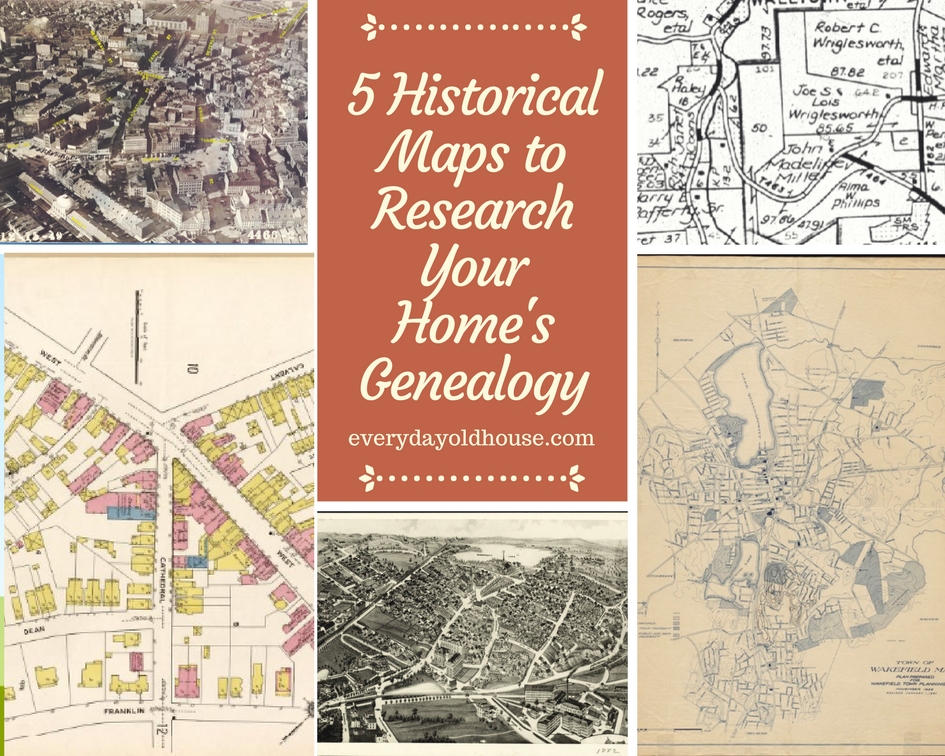Last Updated on August 16, 2024
Researching your home’s history can be a time-consuming effort. And if you are just starting out and unsure of what to do, tracing the history of your old house can feel incredibly overwhelming. To help jump-start your research, here’s 9 quick and easy ways to find your home’s history.

This post contains affiliate links, including but not limited to, Amazon Associates. As such, I earn from qualifying purchases. Full disclosure located here.
9 Easy Ways to Find Your Home’s History
I’ll be upfront with you. The best way to research the history of your home is to first creating a chain-of-ownership through deed research. But digging through deeds can be, well, time-consuming. And well, a bit boring.
My goal with this post is to give you some low-hanging, quick wins on discovering your home’s past. But understand that this is merely a springboard. There WILL be more work to be done….
Each of the easy ways to find your home’s history typically takes about 15 minutes or less. But of course, there could be snags. Or database issues. Please don’t email me if it takes a lot longer. The point of this post is to give you specific, easy resources that don’t take a lot of time to use.
1. Check Zillow
Zillow (or other online real estate websites) won’t provide a significant amount of historic information on your property. However, if you are at the beginning of your search, this is a great baseline. These real estate databases contain house information such as:
- Construction date
- Architectural style
- Lot and building square footage
Plus, you might also see the old listing photos when you bought the house. These photos are a history in itself. It shows what your house looked like before you moved in and put your own stamp on it. If you get a chance, save those digital photos.
2. Email Historical Society & Commission
This fast way to research the history of your house merely requires you to send an email. Most municipalities have a historical society as well as a historical commission. While at first glance they sound like the same group, they are not….
A historical society is a non-profit group funded via member dues, grants, and fundraisers. A historical commission is an official town department with a budget provided via local taxes. They are directed by town law to develop and implement a local preservation program. So, the commission is a bit more formal.
There is a good chance that the folks appointed to the historical commission are the same who volunteer for the historical society. This is especially the case for small municipalities. But it’s still beneficial to interview both the society AND commission.
In your email, obviously you want to include your address. BUT you might also want to include a photo of your house as well as your phone number. Sometimes you’ll get a lot more information from a person-to-person phone conversation than a more impersonal email.
A few years ago, I sent an email to my town’s historical society and was amazed. From sending just one email, I learned so much about my house, including my street originally a Native American trail and subsequently, a training ground for militia before the American Revolution.
3. Review Aerial Photos
Aerial imagery can be an amazing resource to show a visual history of your home. There is a plethora of aerial photography databases. But I’ve found these two to be the fastest and most accessible.
Historical Aerials
Historic Aerials reportedly hosts the largest aerial photography collection in the United States. Often you will find historical aerials from each decade beginning in the 1930s through the 2000s. That’s over 70 years of old aerial photos!
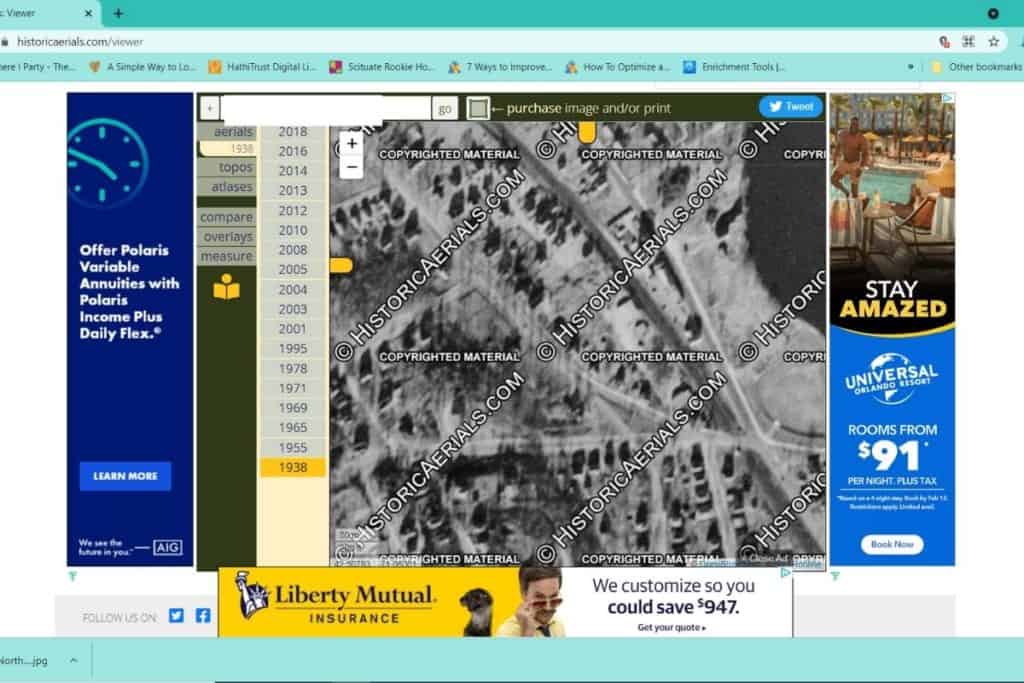
Historic Aerial’s website is free to browse to find your home or area of interest online. However, you must purchase high resolution images to remove watermarks.
Vintage Aerial
The Historical Aerials database above span the country. However, if you happen to live in a rural area, I highly recommend you also check Vintage Aerial. This aerial imagery database hosts 18 million photographs in 41 states from the 1960s onward of rural areas.
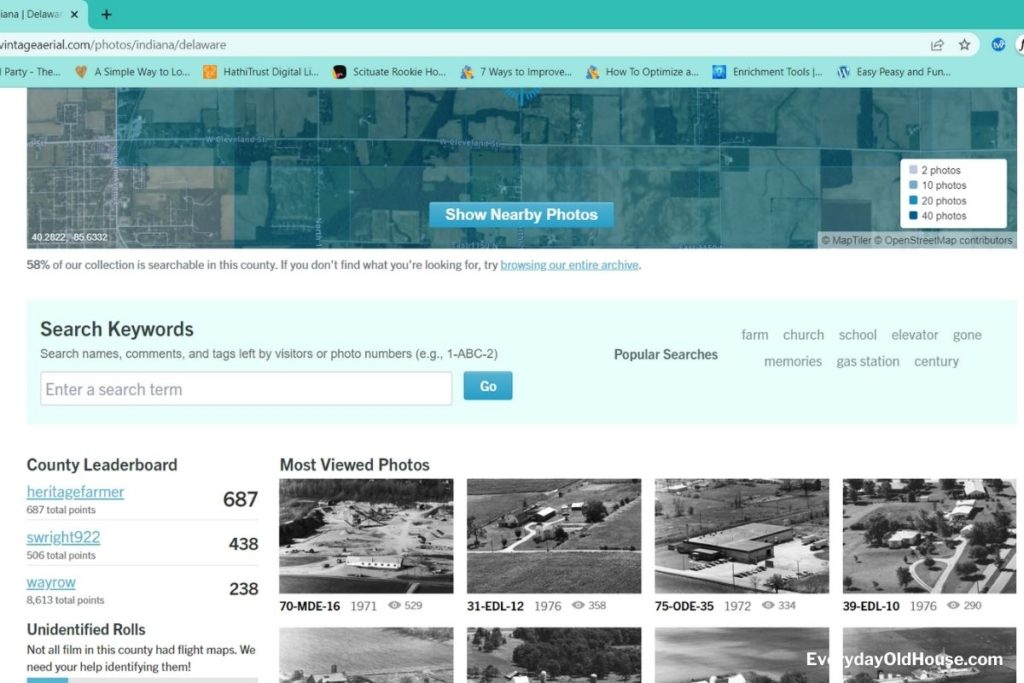
The aerial photos in the Vintage Aerials database were taken much closer to the ground. Which translates to their imagery having substantially more details than Historic Aerials. Here’s a video on how I used Vintage Aerials to locate old aerials of my father-in-law’s childhood home.
4. Interview Neighbors
Every neighborhood has that certain someone who keeps track of what’s going. They see the good AND bad things going on in the neighborhood.
Seek out neighbors who have lived on your block for awhile. Engage them in a conversation about the history of the neighborhood, your house and previous owners. You might be surprised at what you can uncover from the person right next door.
Note that there is one potential disadvantage of this method. When you talk with neighbors, you aren’t relying on written records. Instead, you are relying on someone else’s memories, which may or may not be accurate or complete.
5. Search eBay Postcards
I love looking at old photos, so personally, I think this one of the most fun easy ways to research your home’s history.
In the early 1900s, cameras became commercially available to the general population. And like most technology, it quickly grew popular. People would snap a photo of various places, including their homes, and convert them into postcards to send to family and friends.
Many homeowners of old houses (like the one below) have found postcards of their home.
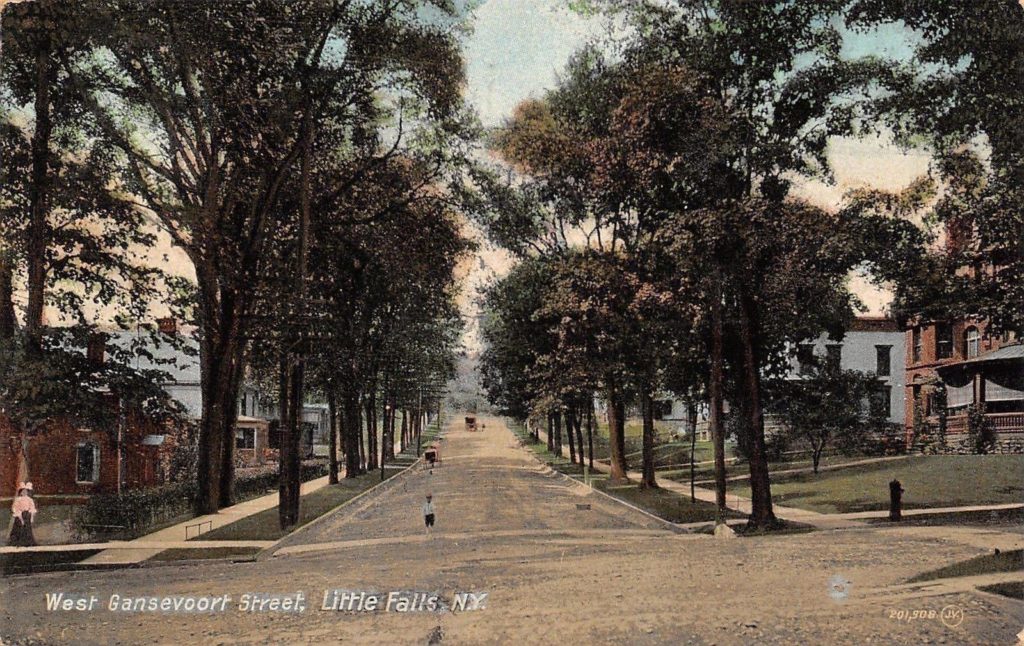
Best places to search for postcards? Check out your local antique store. Or do a quick search for your town on various re-sale websites such as ebay and Etsy.
6. Read Home Inspection
When you bought your home, you likely had a home inspection conducted. This inspection assessed your future home for a variety of potential problems with the parts of a home, like the foundation, roof, plumbing, insulation, etc.
Dust off that home inventory and skim through it to see if there are any clues into the history of your home. You might be surprised at the details in that inspection report.
7. Run DiedinHouse and HouseCreep
A quick way to determine who lived (or rather died) in your home, is through this website – DiedInHouse.com. For a small fee, this website will tell you….. (yup, you guessed it) whether anyone has died in your home.
Okay, yes, it’s a little morbid. But it’s an quick and easy way to find your home’s history!
The DiedinHouse database pulls information from over 130 million police records, death certificates and news reports. All dating back to the late 1980s.
Not only does DiedinHouse provide names and dates of deaths, it also gives a list of more, uh, unpleasant activities that may have occurred in or near your home, such as:
- Meth Activity
- Fires
- Sex Offenders
An alternative to DiedInHouse is HouseCreep.com, a database containing addresses of homes where death records associated with murders, crimes, or other historical events have occurred (even reports of paranormal activity!).
Access to HouseCreep is free, BUT the database is built using crowdsourcing, not formal records. Therefore, their database is likely not as complete nor accurate as DiedInHouse.
BEGINNER’S GUIDE TO HOME HISTORY RESEARCH
Interested in researching the history of your old house but unsure where to start? Grab my newly-release:
Beginner’s Guide: How to Trace the History of Your Old House
This 60-page guide takes you step-by-step through 25+ online and in-person resources to create a picture of your home’s history.
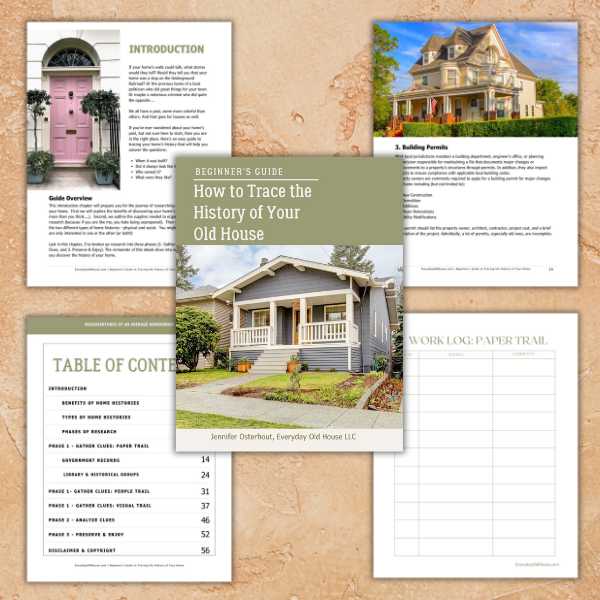
8. Search National Register of Historic Places Database
If your home is over 50 years old, there is a chance it’s been listed as officially historic on a registry. While registries can exist on the local and state level, the easiest list to check is the federal National Register of Historic Places.
The program, managed by the National Park Service, maintains the official list of homes that designated as “historic” due to their age, architectural style and/or overall significance.
Luckily, there are a few ways to access the national registry database. However, I personally find downloading the Microsoft Excel spreadsheet option the easiest (see image below). Once downloaded, search via state, city, and address.
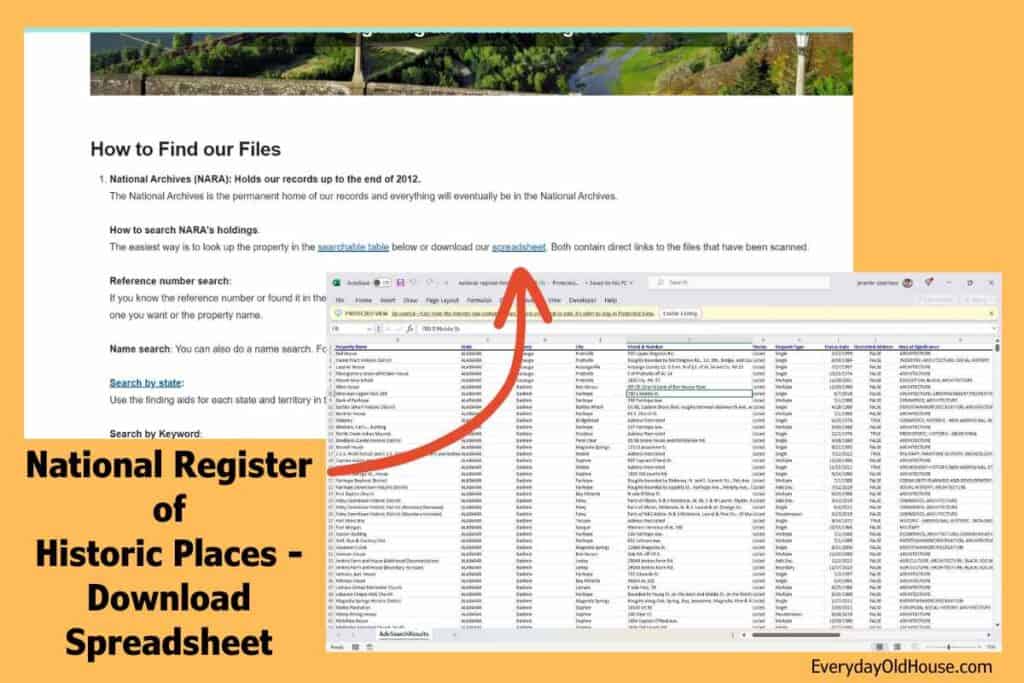
9. Ask a Realtor
The realtor who helped you buy your house (or any local realtor for that matter) should be able to tell you a bit about the history of your home and neighborhood. Good realtors should know the in’s and out’s of your neighborhood, including whether your home is in a designated historic neighborhood.
Once you’ve exhausted this list of easy ways to find your home’s history, are you ready to dive deeper? If so, click here….
Related Posts
Want to be the first to know about new posts? Be sure to follow me on Pinterest, Facebook, Instagram or Twitter of even Etsy! Or better yet… Subscribe below!
My monthly (admittedly sometimes more, sometimes less….) emails are like receiving a unexpected letter from an old friend WITHOUT needing to put on your slippers and walk out to your mailbox…. See? I got ya, my friend!)
[Note: My posts are proudly connected to these amazing link parties full of DIY ideas and inspiration!]
